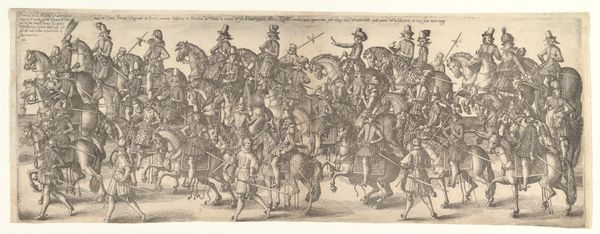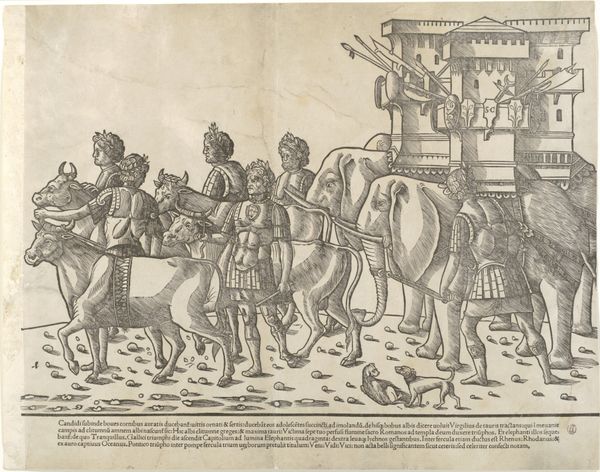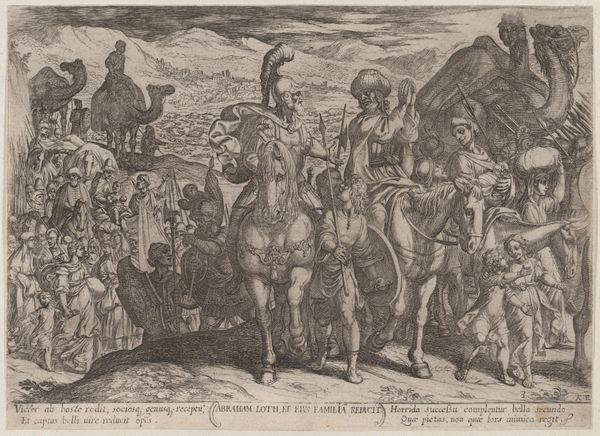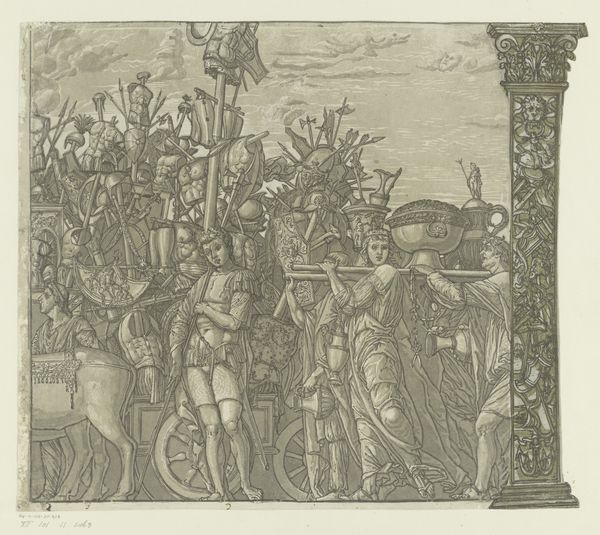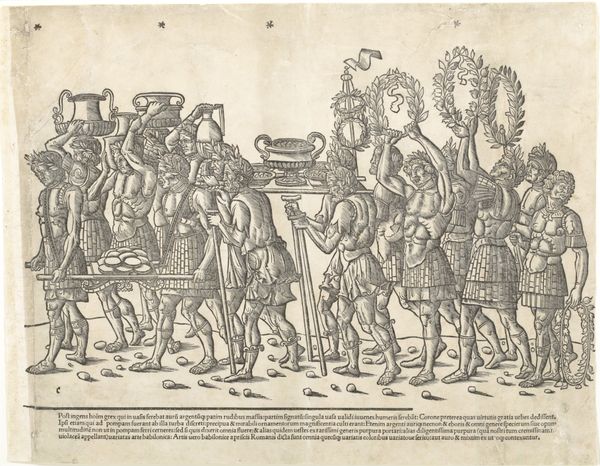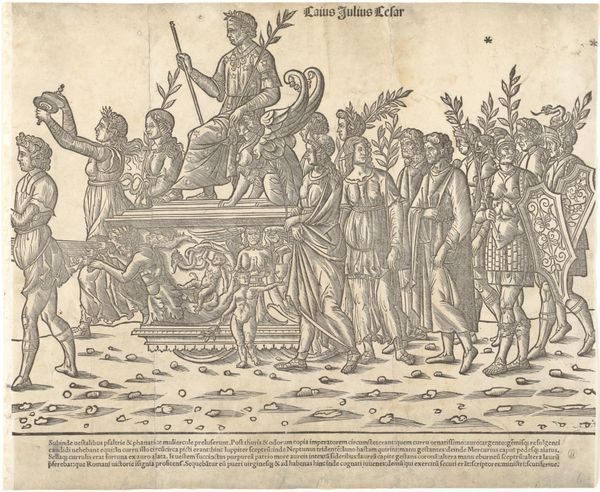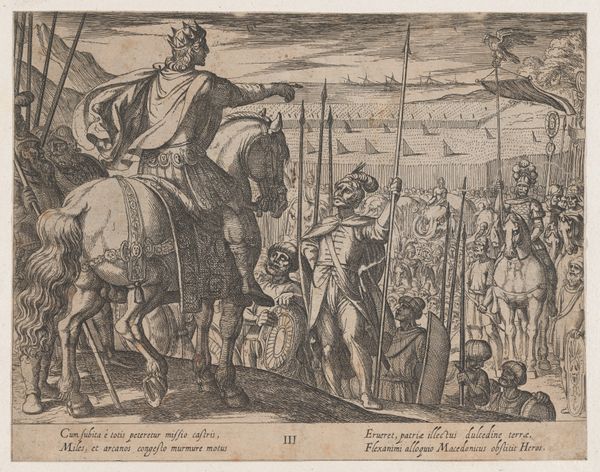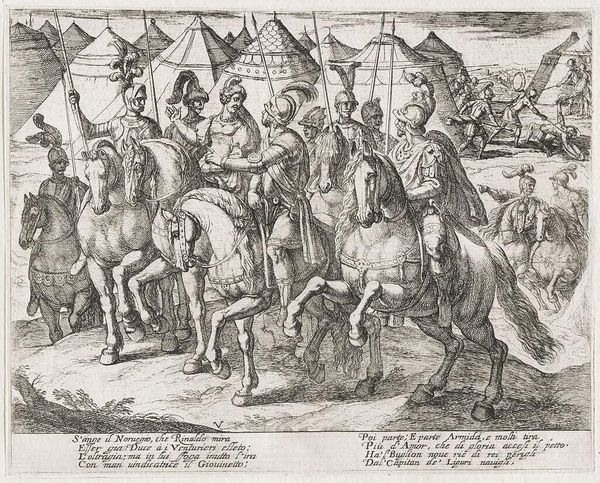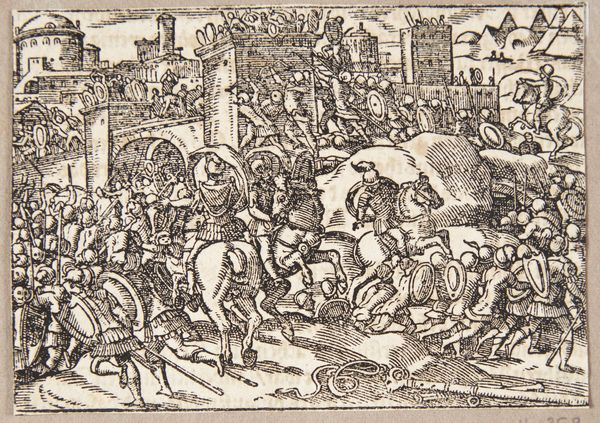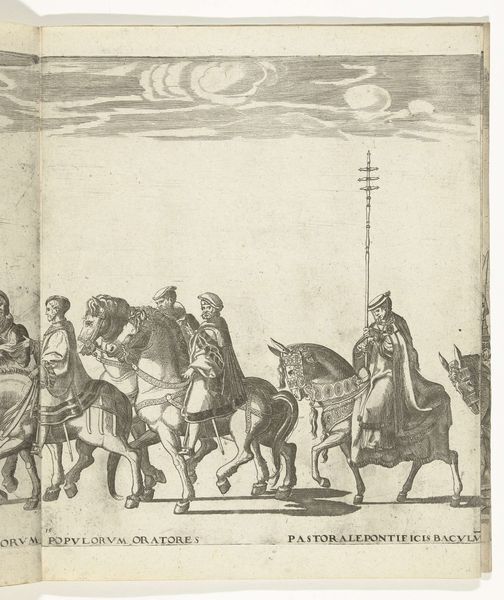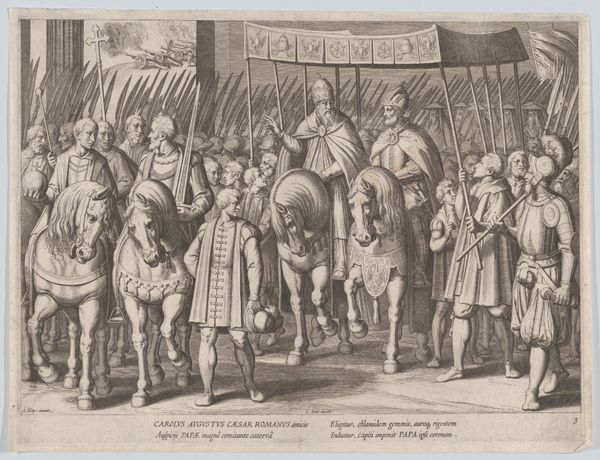
Figures on horseback, from 'The Triumph of Caesar' 1504
0:00
0:00
drawing, print
#
drawing
#
animal
# print
#
figuration
#
soldier
#
horse
#
history-painting
Dimensions: Height: 13 in. (33 cm) Width: 16 15/16 in. (43 cm)
Copyright: Public Domain
This print, made by Jacob of Strasbourg in the early 16th century, captures figures on horseback from 'The Triumph of Caesar'. It’s an engraving, which means the artist meticulously cut lines into a metal plate, inked it, and then pressed paper against it. Look closely. The stark contrast between the black lines and the white paper gives the image its dramatic effect. The act of engraving itself, a labor-intensive process, mirrors the very subject it portrays: the glorification of labor within Caesar's triumphant procession. The print's lines vary in thickness and density to create shading and volume, giving the figures a sense of depth. The texture of the paper adds another layer to the experience. The clean, precise lines speak to the skill involved, yet it is not necessarily about high art, but instead, it is about reproducing and disseminating imagery on a mass scale. So, next time you look at a print, remember the labor, the skill, and the context that have all contributed to its creation. The means of production influences its appearance and imbues it with social or cultural significance.
Comments
No comments
Be the first to comment and join the conversation on the ultimate creative platform.
